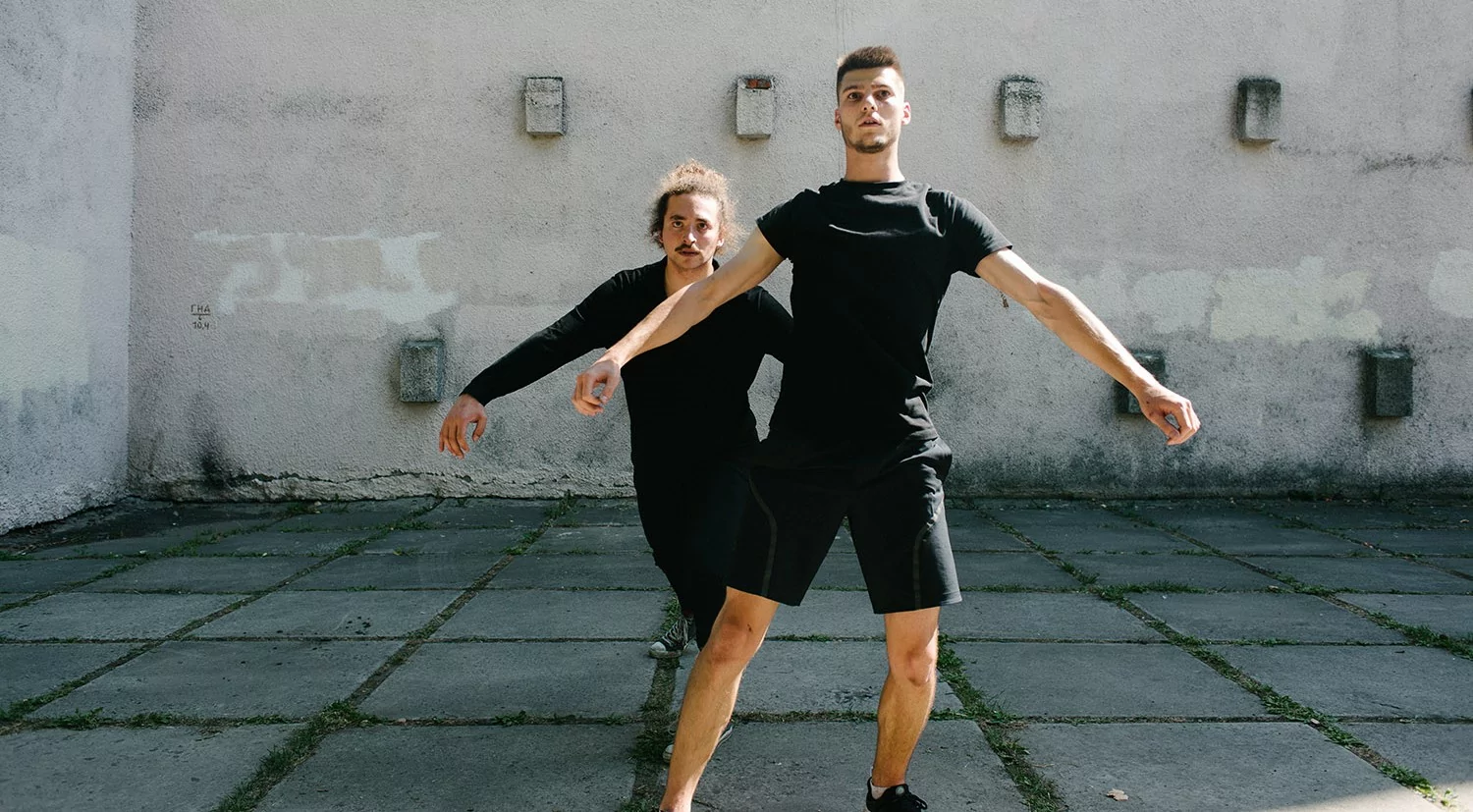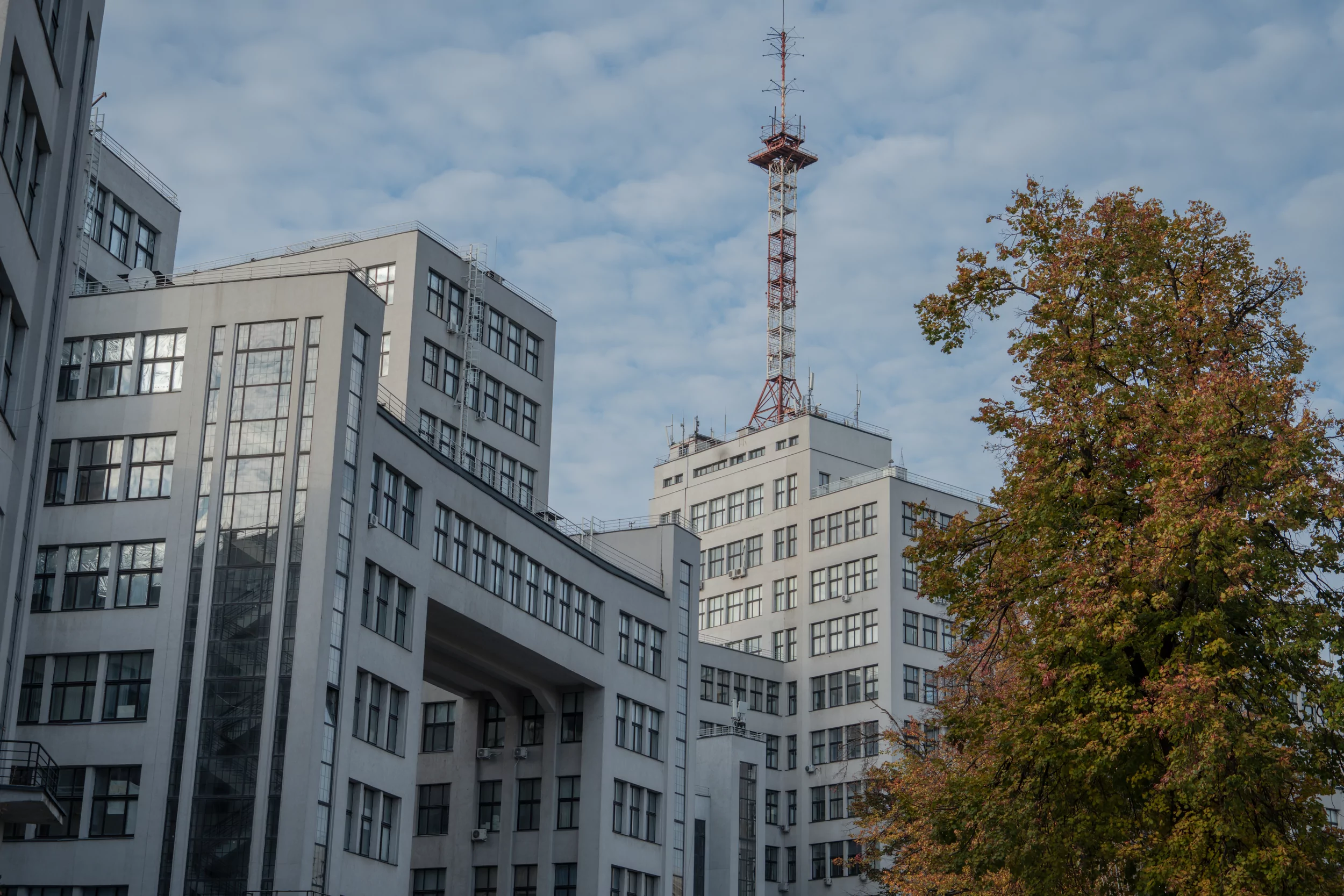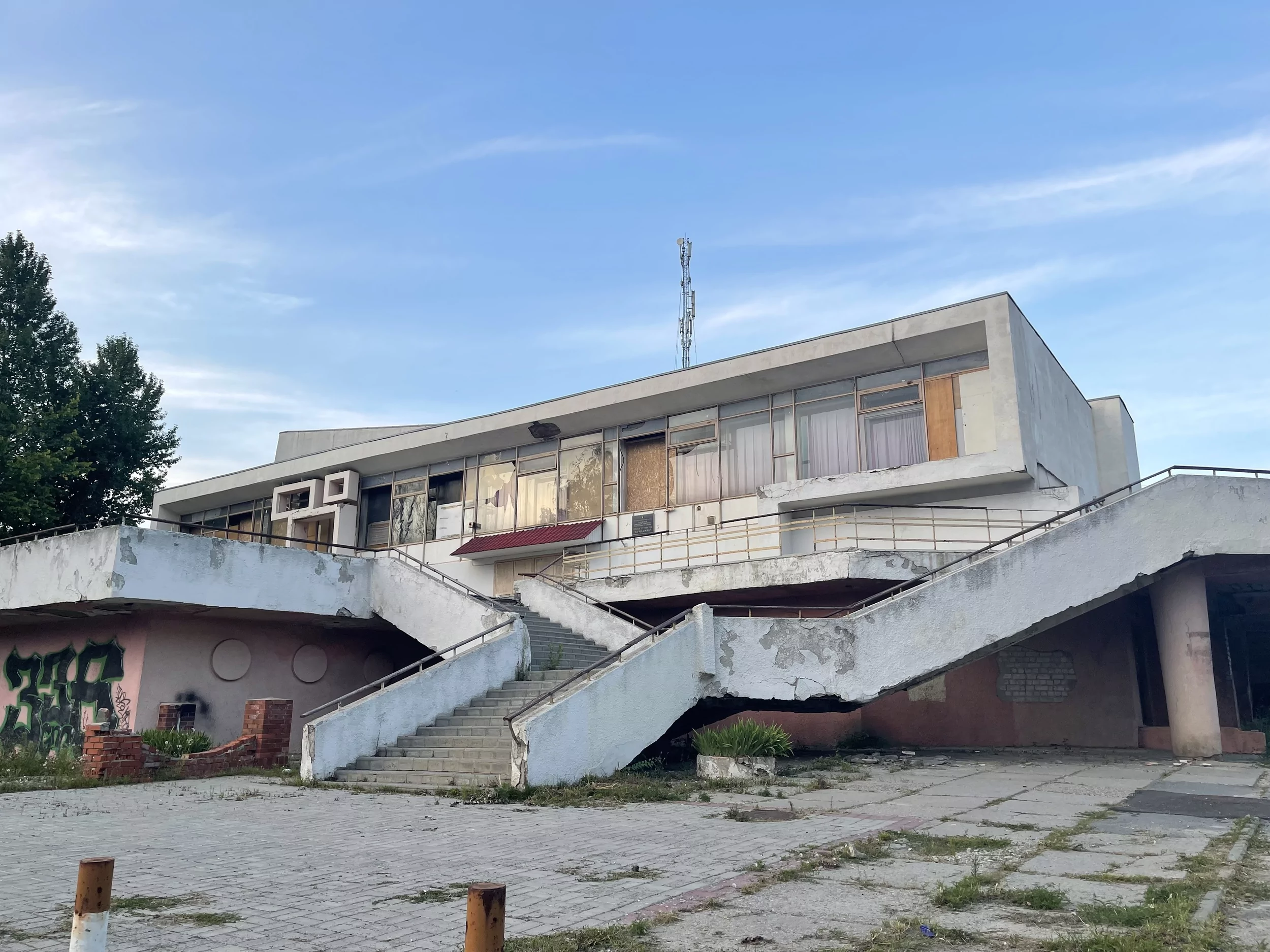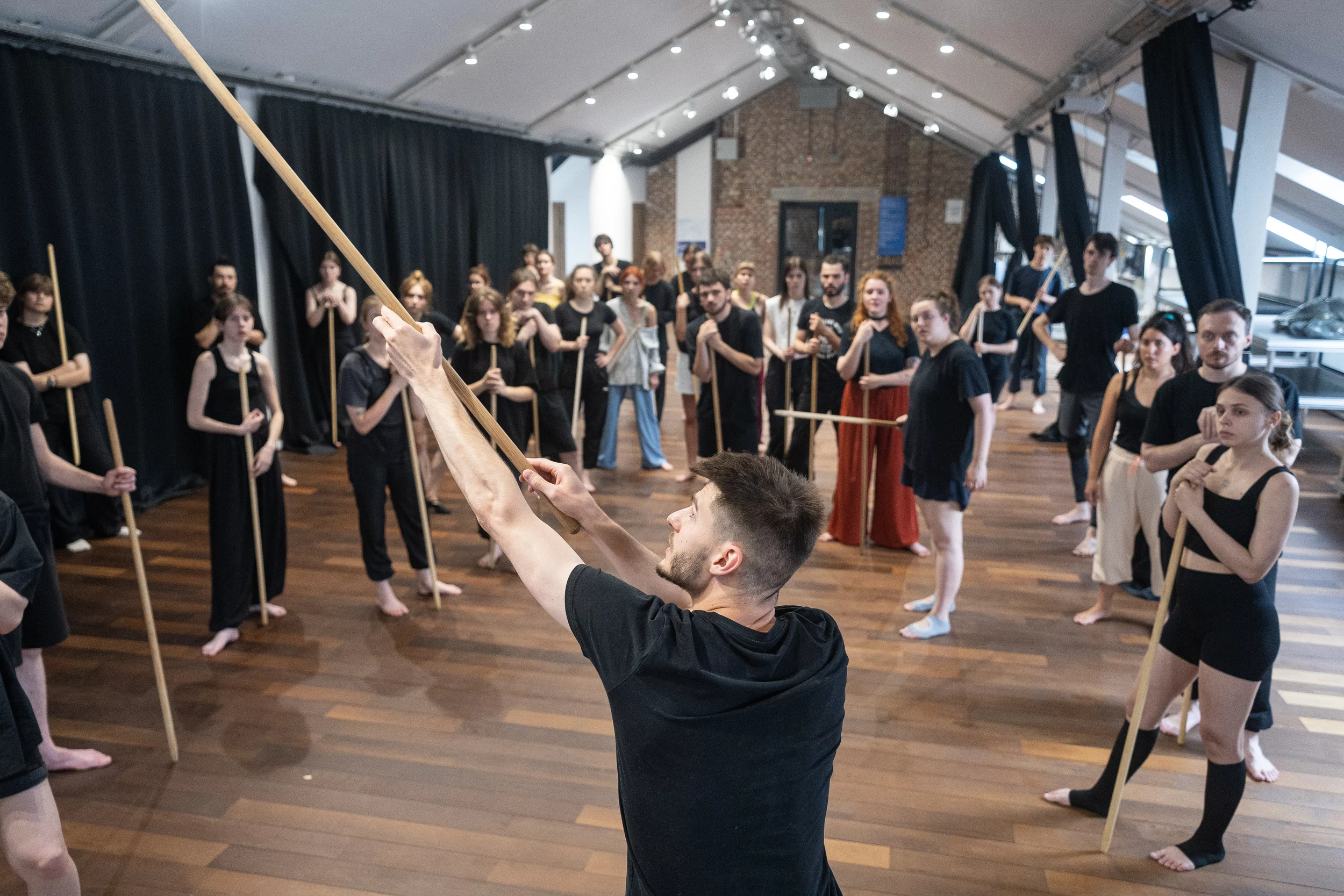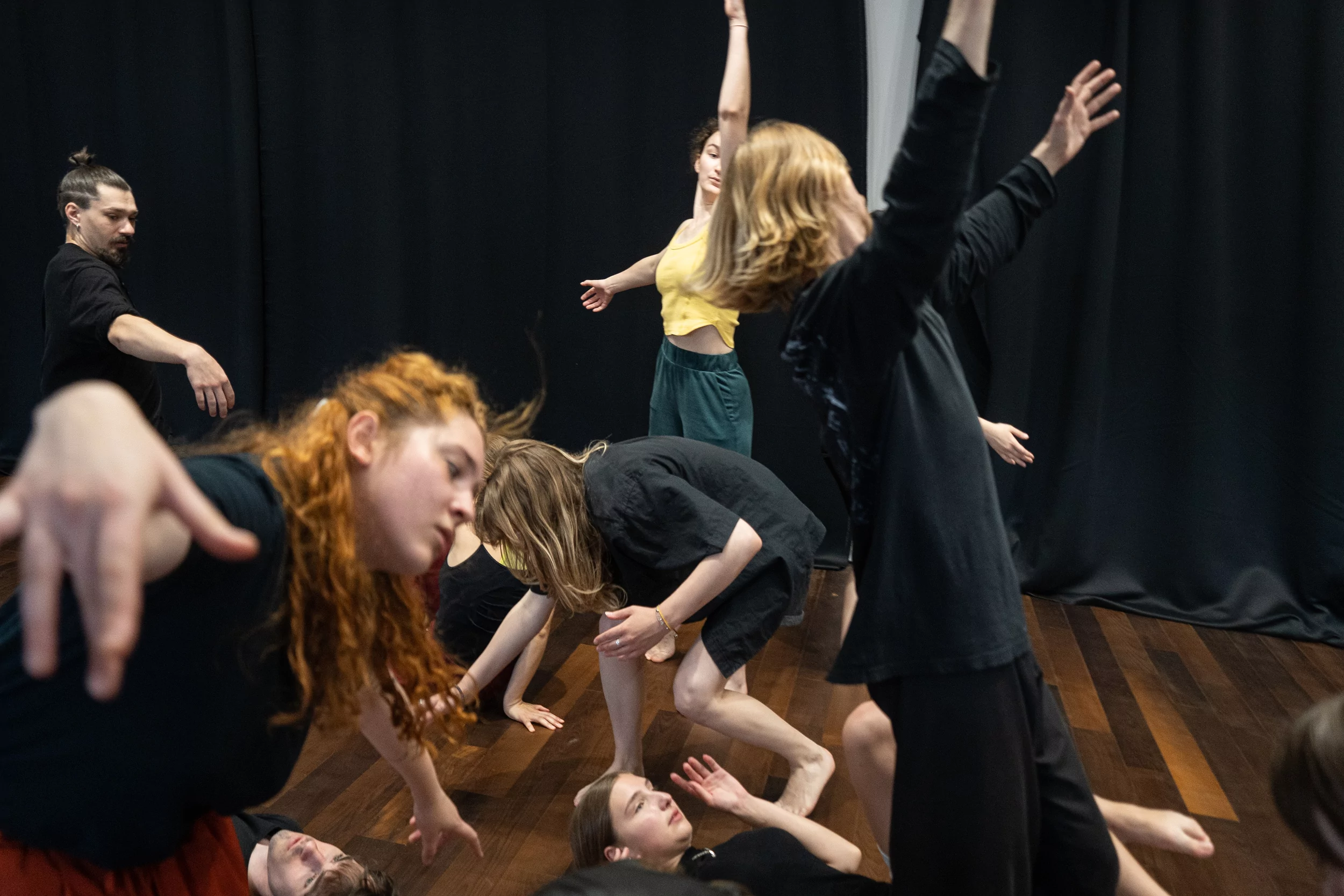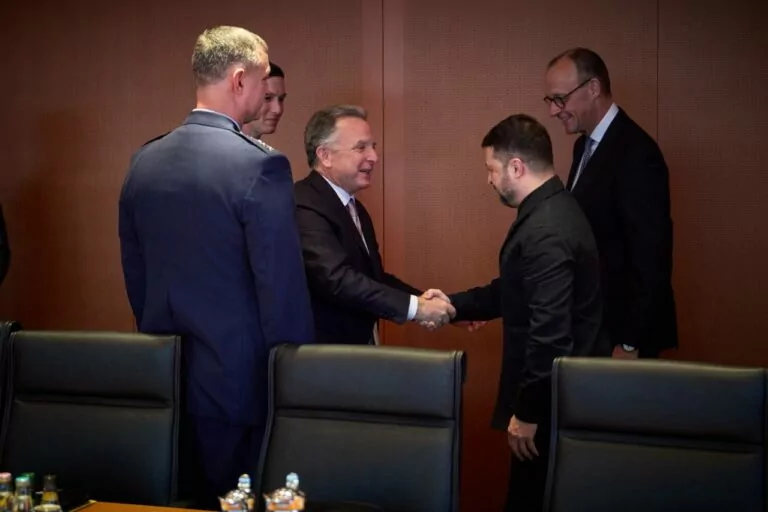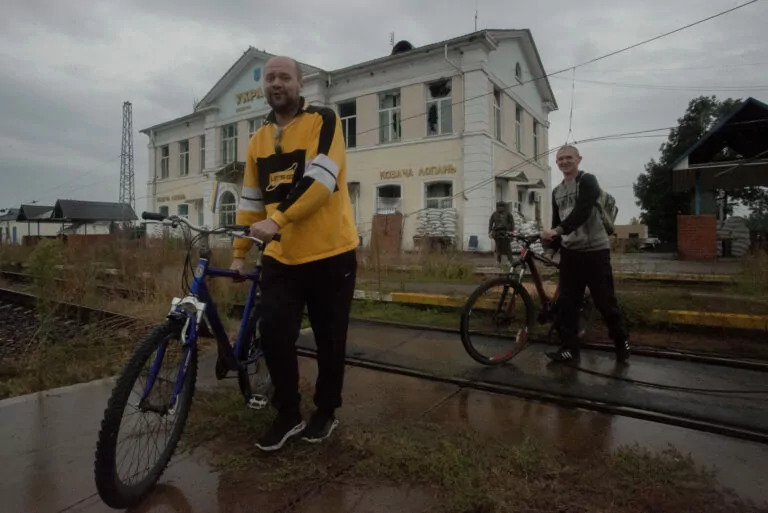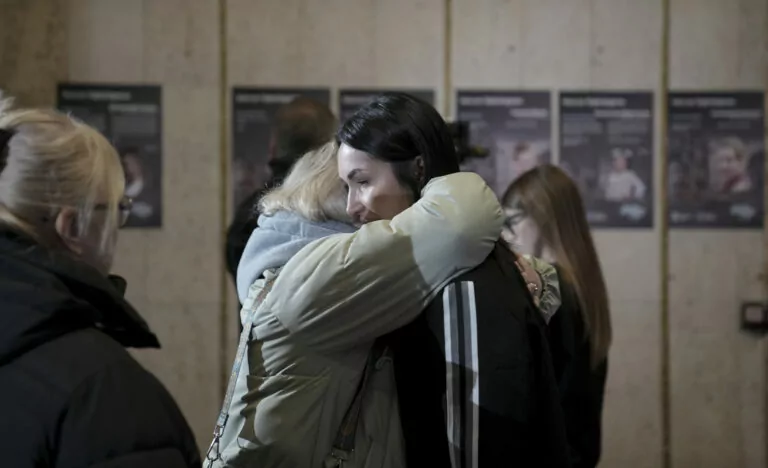In 2021, Jonathan Ben-Shaul, director and choreographer from London, made a documentary-dance film called What Shall We Do With These Buildings? in Kharkiv. The film investigates the legacy of Soviet architecture in the city through movement. Less than a month after premiere, Russia launched full-scale invasion, and their incessant air attacks changed the landscape of the city. Ben-Shaul, then, launched a theater lab in Ukraine, teaching students to explore their surroundings with motion.
Gwara Media interviewed the artist about his experience, artistic method, and impressions of Kharkiv before and after the big war.
You shot What Shall We Do With These Buildings? in 2021, shortly before the invasion. What exactly brought you to Kharkiv then?
It was four years ago, in September 2021. The film was the result of my participation in the Kharkiv Slovo residence in partnership with the Literary Museum and the Kharkiv School of Architecture. I was interested in the impact of Soviet modernism on the city. During those times, there were a lot of talks about ukrainization (increasing usage and promoting Ukrainian language and culture — ed.), preserving heritage, and creating new architecture for new generations. We tried to capture the culture being formed at that moment and talk to people who were discovering the architectural heritage and rethinking their Ukrainian identity.
No one could have imagined that everything would change six months after the filming was completed. The whole thing stopped and was completely shaken to its core by the full-scale Russian invasion.
Has your perception of the footage you shot changed since the beginning of the war? Russian attacks may have damaged some buildings on it.
Many people asked, “What about the buildings? Are they okay?” And I have to be honest with you — I don’t care. I am most concerned about people and cultural activities. Yes, of course, I want symbolic architectural objects like the Derzhprom or the Kharkiv State Academic Opera and Ballet Theatre to be preserved, to get a new identity after the war, and to become cultural centers again. But people are more important than buildings.
Were there any buildings or locations that made a special impression?
Oh, there are so many. Of the ones in the movie, it’s the last one, where we interviewed Oleh Drozdov. We called it the Students’ Palace School of Nutrition.
It is an incredibly playful and exciting building. I think it was built at the end of the 1970s or early 1980s, a time when many architects already knew that the Soviet Union was falling apart and felt that freedom was on the horizon, but they still had the funding to realize their hopes for a new future. This building embodies that very well — filled with joy and life. These are the things that inspire me the most.
Apart from the movie’s buildings, I love Central Park, Sarzhyn Yar (another park in central Kharkiv), and the cable car connecting them. I love all these restaurants, pubs, and the river. There were many places in Kharkiv that I really liked.
The film premiered on January 30, 2022, less than a month before the full-scale invasion. How did you tell your audience about the film and Kharkiv?
The first show took place at the Parade-Fest (a theater and urban festival in Kharkiv), where we presented the film to the local audience — the people who starred in the film and the staff of the Literary Museum and the School of Architecture. We showed the film in a tent right next to the Derzhprom. I remember that we made the final cut, I slept for 20 minutes, — and ran to the premiere with a flash drive to show the film.
After that, we held several more shows. The first festival premiere was in Norway. Before that, we did a few preview screenings in London, one before the full-scale invasion started and one right after. It was a very emotionally difficult period for all of us. I was worried about the people who were in the movie and my friends in Kharkiv and all over Ukraine. I feel grateful that I captured the moment when Kharkiv was in its prime — in September 2021 — when civil society was beginning to actively lead the city toward a great cultural revival.
Now, films like yours are becoming archival.
Yes, this film is about how memory is implemented in the urban landscape. Many buildings were created during the colonial period (under Soviet occupation or imperial Russia). The footage raised questions: What should we do with this heritage now? Do we preserve it? Destroy it? Rethink it?
Like many people in the UK, especially before the Russian full-scale invasion, I had a lot of wrong ideas about Ukraine that were the result of Russian colonization. So I, like many other Ukrainians, went through a process of decolonization. That’s why this film became a so-called time capsule. It captured the moment when Kharkiv was independent, alive, and looking for itself. Before the war, few people in the UK knew about this city. So it was important for me to show that there was a culture there, parties, evenings, and thoughts about the future. This is much more important than constant talk about sirens.
Movement is an interesting tool for expressing ideas, why did you choose it?
Together with Mykola Naboka, my close friend and colleague from Kharkiv, who participated in filming, I studied at the Jacques Lecoq School in Paris. There, we learned a method based on observation and mimicry that became the pedagogical basis of the film. We interviewed architects and ordinary people who use buildings, and we felt this was not enough. We wanted to convey a bodily sense of space. What do you feel when you pass by Derzhprom every day? What does studying at KhAI (National Aerospace University “Kharkiv Aviation Institute”) feel like? What does it feel like to live in these buildings? These are questions that we, as users of space, almost never ask ourselves, but they have an impact.
I think spaces have a profound influence on how we exist. The only way to capture that is to try to “reverse” the architectural process through dance. What movements do these buildings suggest? How can we explore this? The only way is through movement. This was our starting point.
Since then, I have made four other films with my company, Moving House Films. We did similar research with other, very different, types of buildings. Also, the course I taught here in Lviv, in collaboration with the Physical Theater Laboratory and the artistic association Khvylia, was very focused on this type of research.
What movies inspire you?
Various documentaries. I remember seeing a lot of incredible films at festivals. One was also made by a Ukrainian documentary filmmaker. It’s called Liturgy of Anti-Tank Obstacles by Dmytro Sukholytkyy-Sobchuk. It’s a brilliant film about how sculptors started making anti-tank hedgehogs after the Russian full-scale invasion began. These things — experimental architectural projects — inspire me.
Tell us about the Physical Theater Laboratory. Is this your first teaching experience?
Since I left Ukraine four years ago, I have wanted to come back as soon as possible, but the war has postponed this. Mykola moved to Lviv and opened the Physical Theater Laboratory, which is based on Jacques Lecoq’s methodology. For the last two years, I have been coming there to teach the younger generation of actors, designers, and architects.
This year, in the lab, we were working on space analysis. We had an incredible group of students from all over Ukraine, including from the frontline territories. They came to Lviv to research and study the city.
We worked with them for two weeks, teaching methodology basics: how to feel space, transform this experience into movement, and then structures and forms. We also gave each of them an assignment — an envelope with a location in Lviv that they had to explore. These were spaces from different historical periods: Dominican Church, Krakivskyi market, Sknylivskyi park, and other places. The students worked in groups, explored the spaces, and then created a final project — a living archive of their experiences in these places through movement and construction.
Now, more than ever, it is important that young people find a new culture, a new identity, and discover European approaches to theater. In Ukraine, the psychological approach to theater is quite strong. This exchange feels very necessary — to give young people the tools to create their own art, to rethink ideas and spaces in a new way.
How do you find working with Ukrainian actors? Did you learn anything new?
The students were incredible. This year, we received support from the British Council, which allowed us to make the course free and invite more people. We also had a public program — performances by invited artists from the UK who joined online and were able to talk to the young people here and give them an idea of what opportunities exist in the world. It was an extremely touching exchange of experiences and connections. Every time we do a workshop like this, it’s always exceptional to see what they can create; to be surprised, amazed, and blown away by what they do as individuals.
Besides supporting Ukrainian theater, how else do you help here?
Bringing this cultural and pedagogical experience here is very important to us.
As for the rest, What Shall We Do With These Buildings? continues to travel the world, participating in international film festivals. We are spreading the message about what Kharkiv was like before the Russian aggression. We have already raised about £20,000 ($26,562) for humanitarian aid. We have dedicated all the profits from this movie to help Kharkiv.
When you’re abroad, you can read a lot about Ukraine and what life is like here, but you really don’t know anything until you come here and experience it firsthand. I didn’t come alone, but with colleagues from Spain, Switzerland, France, and the UK — we all talk about Ukraine as it is now and the creative energy that exists here.
You have not been to Kharkiv since the beginning of the full-scale invasion. Would you like to visit the city again, perhaps with a new project?
Of course, I want to return to Kharkiv. I want to walk around my favorite places, see my friends, and maybe shoot a sequel.
There is a lot of talk in the architectural world about reconstruction and how this process should take place. I think this would be a very interesting focus for a new movie in the future. We organized a screening of What Shall We Do With These Buildings? at the Royal Institute of British Architects, where Oleh Drozdov and Norman Foster, who is actually the chief architect for the reconstruction of Kharkiv, met each other. Their conversation raised many important questions about who should lead the rebuilding of Kharkiv. Should it be Norman Foster and his team? Or should it be people themselves? And how should this reconstruction take place? How can Ukrainian identity be incorporated into the reconstruction of these buildings? And how can we preserve part of the heritage? These are the things we would like to explore in the future.
Thank you for your interest in Ukraine’s cultural life — although it slowed down significantly with Russia’s war, it is still moving forward. Please, consider also supporting our Kharkiv-based newsroom by buying our journalists a coffee or subscribing to our Patreon.
Read more
- “I make performances that ask — okay, what will you do now?” Director Alin Uberti on organizing workshop in Kharkiv, crafting alternative theater in Romania, and Russian promises to Bucharest
- “I cried when I saw Kharkiv laugh again.” Nina Khyzhna on how Nafta Theater embraces changes that come with war
